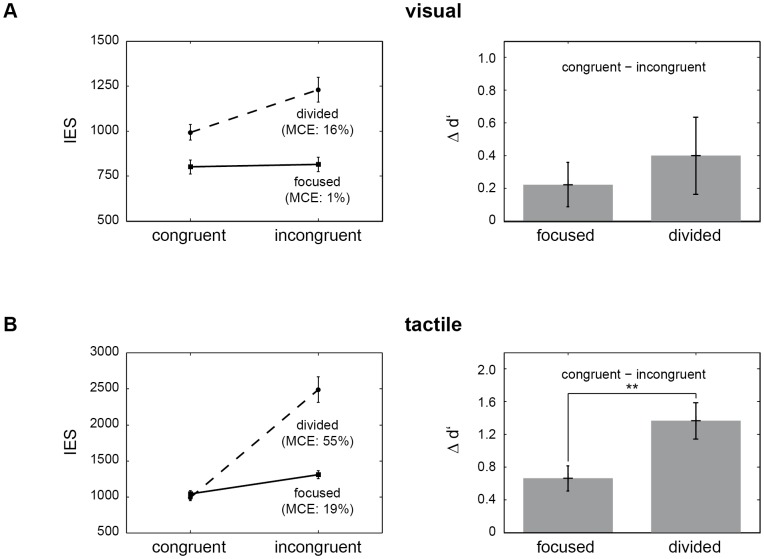Figure 2. Influence of pattern congruence and attention on detection performance of visual (A) and tactile targets (B).
A: (Left) Mean inverse efficiency scores (IES), shown with standard errors (SE) for the detection of visual targets in congruent and incongruent pairs of stimuli. The solid line mirrors performance for the focused attention manipulation, the dashed line for divided attention. Multisensory congruence enhancement (MCE) scores are displayed in brackets. Smaller IES for congruent pairs of stimuli illustrate the congruence facilitation effect in detection performance. This advantage is more prominent when attention is distributed across vision and touch, which is further illustrated by MCE scores. (Right) Difference plots for the d'-estimates comparing values for congruent and incongruent target cases under focused (left) and divided attention (right). The higher difference of d'-estimates for divided attention implies that stimulus congruence driven advantages are more pronounced when attention is distributed across the visual and the tactile modality. Nonetheless, stimulus congruence also results in improved behavioral performance for the focused attention manipulation. Error bars indicate 95% confidence intervals and confidence bounds not including zero represent reliable differences. B: Inverse efficiency scores (IES) and d'-differences for tactile targets. Again, multisensory congruence enhancement (MCE) scores are displayed in brackets and error bars in the right chart correspond to 95% confidence intervals. IES and d'-differences illustrate congruence driven benefits in behavioral performance. Of note, the congruence facilitation effect, as expressed in MCE scores and d'-differences, is significantly bigger for divided attention.

